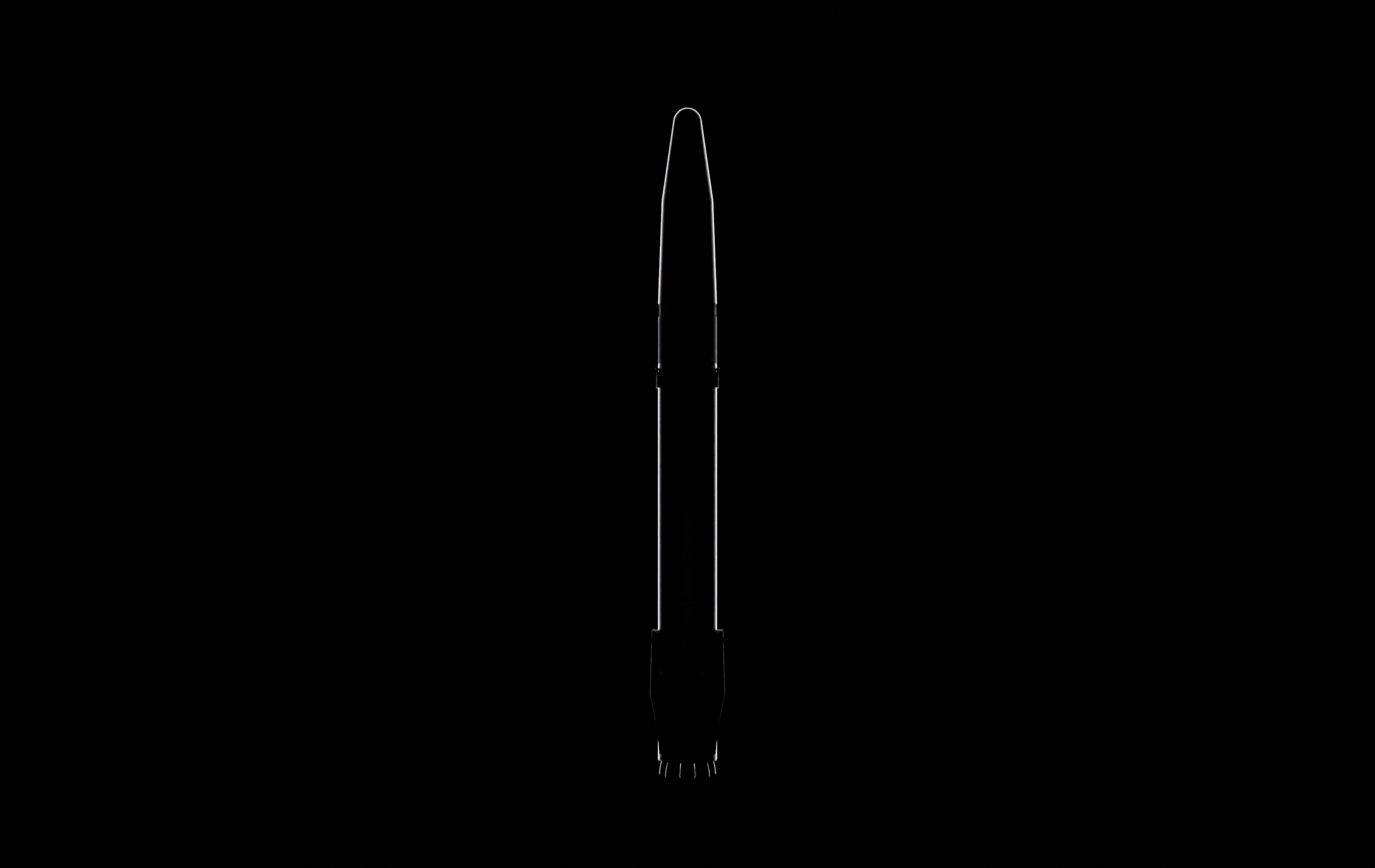
Catalyzing Civilizational Progress
-.-. .- - .- .-.. -.-- --.. .. -. --. / -.-. .. ...- .. .-.. .. ... .- - .. --- -. .- .-.. / .--. .-. --- --. .-. . ... ...

Razor Crest Mk-1
The world’s first fully reuSable
medium-lift launch vehicle yet.

Maximum Payload Capacity
24.8 Tonnes to LEO
10.8 Tonnes to GTO
6.8 Tonnes to TLI
EtherealX Stallion
The EtherealX Razor Crest Mk-1 will house 9 of the most powerful operational liquid rocket engines in Asia, Europe, Australia, Africa, South America, and Antarctica - Stallion. EtherealX's single Stallion engine will produce an enormous 925 kilonewtons of thrust, enabling the Razor Crest Mk-1 to carry 24.8 tonnes to LEO, making it one of the most powerful to-be operational medium-lift reusable vertical landing launch vehicles ever. Razor Crest will be established as the workhorse of India and will inevitably result in revolutionary beginnings for in-space services and human spaceflight programs across the globe.
-
925 kN
-
RP1/LOX
-
Closed Gas Generator
-
~275s-295s
-
~313s-330s
Meet the Founders
-

Manu J. Nair
CO-FOUNDER & CHIEF EXECUTIVE OFFICER
-

Shubhayu Sardar
CO-FOUNDER & CHIEF OPERATIONS OFFICER
-

Prashanth Sharma
CO-FOUNDER & CHIEF TECHNOLOGY OFFICER
-
Co-Founder & Chief Executive Officer
Manu is a Mechanical Engineer with a strong passion for space since his early days as an aspiring astronaut. Having published experimental research works in Power Systems and Nano Science, Manu has now formally begun his training and education in astronautics. As a former part of the executive team of Manastu Space, Manu has developed and managed strategic partnerships with several satellite manufacturers, small launch vehicle manufacturers, and nationalized space agencies from across the globe. He has single-handedly introduced and commenced new technology offerings/products such as Auxiliary Propulsion Systems (APS), Life Support Systems (LSS), Hybrid Propulsion, Retro Thrusters, and Ascent Propulsion. Further, Manu has proven experience in restructuring core processes and modus operandi to improve overall efficiency, and team performance and to enable effective communication. Being a Scientist-Astronaut Program Graduate of the International Institute for Astronautical Sciences, he is trained in Atmospheric Science, Solar Mechanics, and in operating Suborbital Spaceflight Airborne Imagery Equipment setup to capture Noctilucent Clouds in the upper mesosphere while having donned a pressurized Intra-vehicular Activity (IVA) Spacesuit. He is also indoctrinated to high-gravity(G) and changing-G environments (unsuited) with exposure to Gx, Gy, and Gz accelerations and mechanical countermeasures and Anti-G Breathing Maneuver techniques in an Extra 300L aerobatic aircraft. Furthermore, he was briefly a part of the Indian Space Research Organisation’s (ISRO) Project Gaganyaan - India's first human spaceflight mission and program, carrying out a live project developing the waste management system (WMS) for astronauts in microgravity.
-
Co-Founder & Chief Operations Officer
With his goal of sustaining humanity beyond our planet, Shubhayu aims to improve society by utilizing space as a resource. He has a near-decadal experience in cross-functional and multi-site space systems engineering at the Indian Space Research Organisation (ISRO). As an aerospace engineer from the Indian Institute of Space Science and Technology (IIST), he started his career at the spaceport of India - Satish Dhawan Space Centre (SDSC). He led his cross-functional team successfully into multiple projects of international and national importance, such as - the Mars Orbiter Mission (MOM), Indian Regional Navigational Satellite Systems (IRNSS), Disaster Management Constellation (DMC), Indian National Satellite (INSAT), and Cartography Satellite (CARTOSAT) series of satellites. At SDSC, he had hands-on expertise in the assembly, integration, and testing of the Indian fleet of Launch Vehicles and spacecraft. He was handpicked as one among the 23 out of the 10,000 scientists from across all ISRO Centres to kick-start India's maiden Human Spaceflight Mission - Gaganyaan, a project worth INR 10,000 Cr. announced by the Prime Minister of India. He was eventually transferred to the Human Space Flight Centre (HSFC), headquartered in Bengaluru, to design and develop critical Life Support Systems for the Indian leg of astronauts. Further, he has been a core member in chalking out an end-to-end plan to operationalize the country's first Astronaut Training Facility in Karnataka. Additionally, he served as a techno-manager at HSFC, where he interfaced with international and national agencies such as NASA, ROSCOSMOS, DRDO, and IAF to develop human-machine interactive space-qualified systems.
-
Chief Technology Officer
Currently an Aerospace engineer, Prashanth discovered his love for rockets right from his early days. Eventually having worked in the Propulsion sector, he realized the need and saw the opportunity to build propulsion systems that could prove to be more efficient. His vision has always been toward enabling more economical space transportation systems. Prashanth has proven experience in designing and developing Aerospikes, Green propulsion systems, and Reusable launch vehicles. Notably, as a significant part of the Liquid Propelled Rocket Development Team (LPRD), at the University of Minnesota, he has built hardware that has successfully crossed the Karman line, built in-space green propulsion systems, designed engines for several private firms such as Aero2Astro and Manastu Space, developed engines ranging from 1N to 25kN, and has acquired more than 2000 seconds of engine test firing experience.


